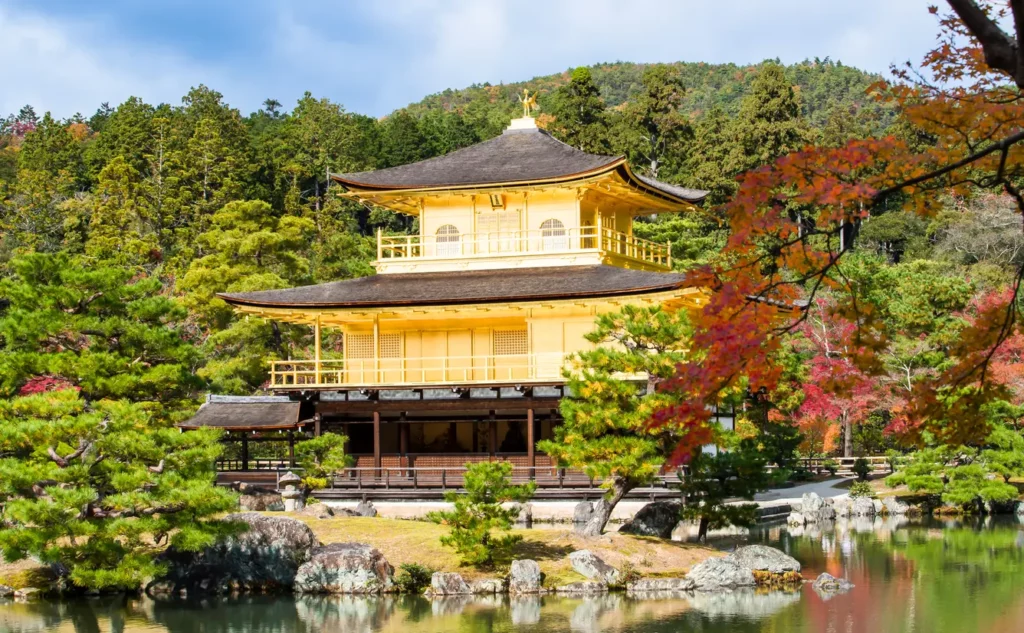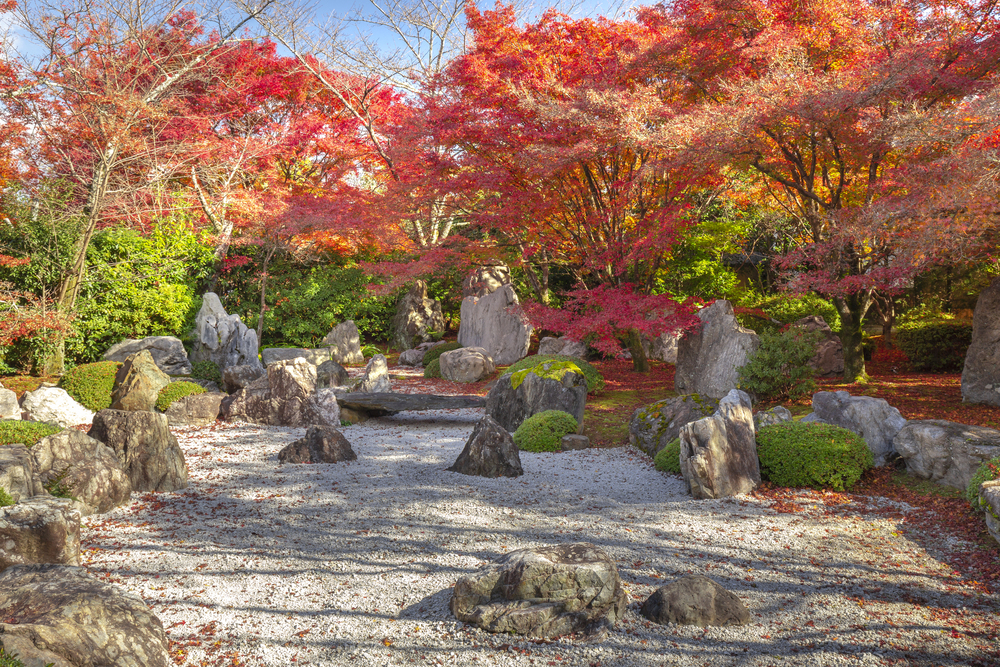If you are going to go sightseeing, you want to incorporate into your itinerary things that you can only see and experience during that time of the year. In this issue, we will introduce the conditions, events, and recommended spots in Kyoto in October for those who wish to do so.
Let’s make your trip to Kyoto memorable! Click here to request a private photo shoot.
About Kyoto in October

Weather
In October, Kyoto has a pleasant temperature with a hint of autumn. Average temperatures range from about 15°C to 20°C, with warm days and slightly cooler nights. Morning and evening temperatures can be particularly chilly, so it is a good idea to bring a light jacket.
Events
October in Kyoto is the time of year when many traditional events are held. Autumn leaves begin to change color, and geiko and maiko perform in the Hanamachi district. Autumn deepens in each scene.
Travel
October is the best season for sightseeing and many tourist spots are decorated with autumn leaves. Since Kyoto is extremely crowded during the fall foliage season, it is recommended to make reservations at popular tourist spots, accommodations, and restaurants at least two to three months in advance. In particular, special viewing of famous temples and tourist spots are often fully booked unless reservations are made early.
October Fashion
In Kyoto in October, a layered style is convenient: wear a light shirt or blouse during the day and a sweater or cardigan at night. It is also a good idea to bring light outerwear that is easy to take off and put on, such as a jacket or parka. Since there are many sightseeing spots and many opportunities to walk, familiar sneakers or comfortable walking shoes are recommended.
Go to see the autumn leaves a little earlier
October is the season in Kyoto when the autumn leaves begin to turn beautiful colors. Many shrines, temples, and gardens in the city are decorated with autumn colors, creating a beautiful contrast. In addition, many places light up the autumn leaves to create a fantastic night scene.
Ruriko-in temple(瑠璃光院)

Located at the foot of Mt. Hiei, the temple’s grounds are covered with brightly colored trees from early October to early December, and the entire garden is enveloped in red and yellow autumn leaves. The temple is especially famous for the view of the autumn leaves from the second floor of the drawing room, where visitors are mesmerized by the picture-perfect foliage of the garden seen through the windows. During the autumn foliage season, the temple is open to the public for a special exhibition, allowing visitors to enjoy the inside of the building and views that are not usually available.
Shorenin Temple(青蓮院門跡)

Located in Higashiyama, one of Kyoto’s famous sightseeing spots with many famous temples, shrines, historic sites, and scenic beauty spots, this temple is known as one of the best places to view the autumn leaves in Kyoto. The temple is also known as one of the best places to view the changing colors of the autumn leaves.
Shoseien Garden(渉成園)

The garden of Higashi Honganji Temple, popularly known as “Ohigashi-san” by Kyoto citizens, offers a magnificent autumn scene as the trees turn red and yellow from late October to early December. In the garden, designated as a national place of scenic beauty, visitors can appreciate the beauty of the autumn leaves reflected in the pond. The Shoseien Garden is an ideal spot for those who want to enjoy autumn in peace and quiet, as they can appreciate the beautiful autumn leaves in a tranquil atmosphere away from the hustle and bustle of the tourist area.
Participate in traditional events
Many traditional events are held in Kyoto in October, allowing visitors to experience history and culture with the arrival of autumn.
Jidai Matsuri Festival(時代祭)

It is one of the three major festivals in Kyoto and is held as an annual festival of Heian Shrine. People dressed in costumes from each period from the Heian to Meiji periods form a procession and parade from the Kyoto Imperial Palace to Heian Shrine. About 2,000 people participate in the procession, which travels a total distance of 4.5 km. The spectacular procession, which recreates historical costumes and customs, gives visitors the feeling as if they have stepped back in time.
Kanname Sai Festival(神嘗祭)

It is an important Shinto festival celebrating a good harvest. A ceremony is held to dedicate the new rice to Amaterasu, and similar ceremonies are held at shrines throughout Japan. In Kyoto City, many shrines also hold the Shinto Kanname Sai Festival and continue to observe the ancient tradition.
Kurama no Hi Matsuri(鞍馬の火祭)

One of the three most unusual festivals in Kyoto, the Yuki-jinja Shrine Festival is held at night. Local people carry large torches and carry a portable shrine while turning the night sky red. This fire festival has been a traditional event since the Heian period (794-1185) and provides a powerful spectacle for visitors.
Experience Traditional Crafts in the Autumn of the Arts
Autumn is the season of beautiful colors in nature, and it has come to be known as “autumn of art” because the scenery provides artistic inspiration. Along with the abundance of nature, experiencing traditional crafts is a great way to experience the charm of Kyoto.
Tomihiro Senko(富宏染工)

Visitors can learn about the current state of modern kimono making. Several menus are available, ranging from a one-hour workshop tour and experience of traditional yuzen dyeing (one of the traditional techniques used to dye kimonos and obis) to a two-hour production experience of hand painting on fukusa (a square cloth used in the tea ceremony to purify and carry tea utensils). The menu includes a variety of activities, including a two-hour hand-painting experience.
Tomihiro Senko official website: https://www.sairin-kyoto.com/company
Kochu Gama(洸春窯)

Participants can try their hand at painting on traditional Japanese pottery known as kochi-yaki. Participants can choose to paint their own patterns on unglazed mugs or paint colors on mugs with white raised patterns. All necessary tools and materials are provided for the experience, and the finished pieces will be fired and shipped at a later date. Reservation deadlines vary by course, so early booking is recommended.
Kochu Gama official website: https://koshuntouen.jp/
Tsujigahana Dyeing Studio Eshiborian(辻が花染め工房 絵絞庵)

At the workshop, visitors can see the works and products that have been produced and the production process. In addition, workshops are offered, where visitors can experience dyeing furoshiki wrapping cloths, obiage, half collars, and stoles using traditional dyeing techniques. Visits to the store are also by appointment only, so it is recommended to make a reservation in advance before visiting.
Tsujigahana Dyeing Studio Eshiboriann official website: http://www.tsujigahana.com/

